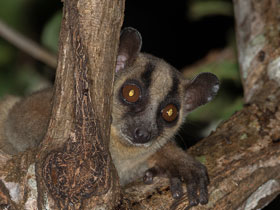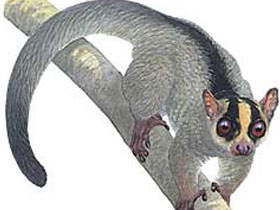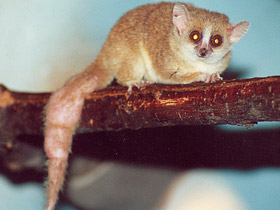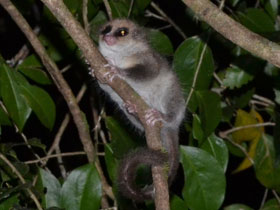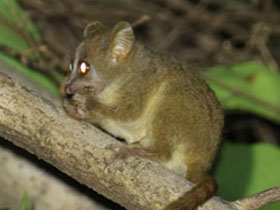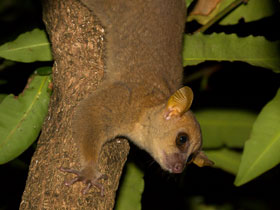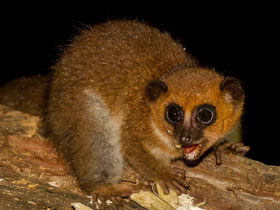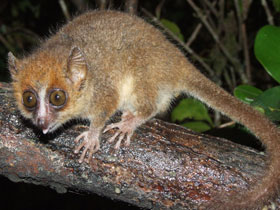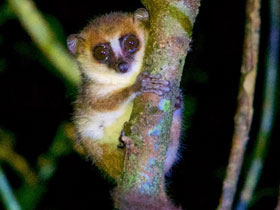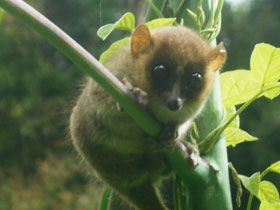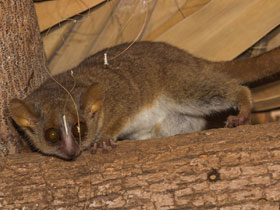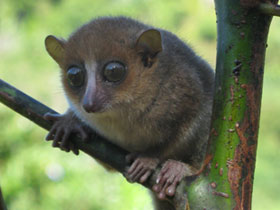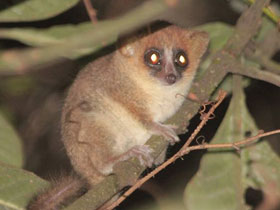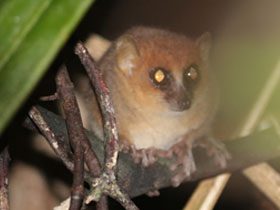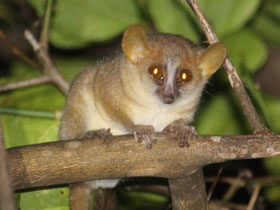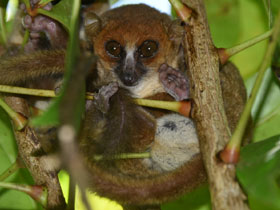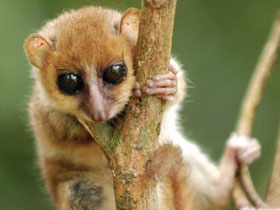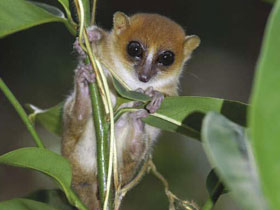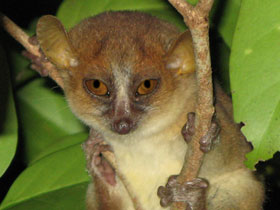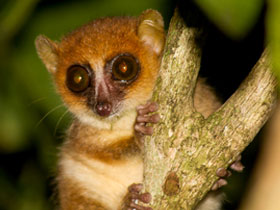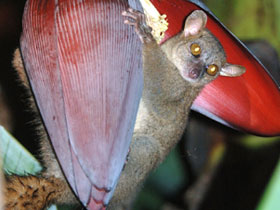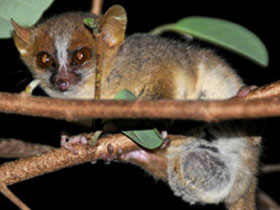The family Cheirogaleidae
The Cheirogaleidae are the family of strepsirrhine primates containing the various dwarf and mouse lemurs. Like all other lemurs, cheirogaleids live exclusively on the island of Madagascar.
Appearance
Cheirogaleidae are a family of strepsirrhine primates containing among others dwarf lemurs and mouse lemurs.
Members of this family have retained many primitive features and are therefore the best living proof of our origins. These inhabitants of the tropical forests of Madagascar bear little resemblance to the monkeys we know. They have large eyes, a rounded snout and a rather long tail. Other external features of these small animals are their medium-sized ears, bare on the inside and covered on the outside with very fine, sparse fur; unusually graceful limbs with short toes; and delicate, soft, silky fur.
Chirogaleids are nocturnal animals, active only at night; during the day they sleep curled up in tree hollows or in nests made of grass, small twigs and leaves. This is why their eyes are so large, and they can also see well in the dark, because they have a special layer of crystals that reflect light in their eyes behind the retina (this adaptation has been found in many other species of nocturnal mammals). In most zoos, chirogaleids and other nocturnal critters can only be seen in the special "Nocturnal Monkeys" room. It is quite dark during the day, so they feel comfortable and actively go about their business. At night, the staff turn on the lights and the animals think the sun is up and go to sleep.
Behaviour and characteristics
Many members of this family are unique among primates in that they can spend days, weeks or even months in torpor (anabiosis). During this time their metabolism slows down and their body temperature drops to +15 C (to save energy). During the warm season, in preparation for "hibernation", chirogaleids feed very actively and almost double their weight. At the base of their tails they accumulate a fat reserve that is consumed during anabiosis.
In the wild, chirogaleids usually stay alone or in pairs in the treetops, moving deftly through the branches by trotting and hopping on all four limbs. All members of this family feed on fruits, flowers and nectar and are pollinators of many plants. Some species often descend briefly to the ground to hunt insects and other small animals. They are also very fond of licking the sap of various plants with their long tongues. The teeth of the chirogaleids are adapted to incise the bark of a tree to stimulate the flow of sap from the tree.
Reproduction
After a short gestation period of three months, chirogaleids bear 1 to 4 very small (3-5 g) blind young. The female carries the young with her mouth, as they never cling to their fur like other primates. The young develop very quickly and reach sexual maturity at 7-10 months of age. In the wild, chirogaleids rarely live more than 5 years; in captivity, they may live up to 10 years.
Classification
The five genera of cheirogaleids contain 42 species.
Infraorder Lemuriformes:
Family Cheirogaleidae:
- Genus Cheirogaleus: dwarf lemurs:
- Montagne d'Ambre dwarf lemur, Cheirogaleus andysabini;
- Furry-eared dwarf lemur, Cheirogaleus crossleyi;
- Groves' dwarf lemur, Cheirogaleus grovesi;
- Lavasoa dwarf lemur, Cheirogaleus lavasoensis;
- Greater dwarf lemur, Cheirogaleus major;
- Fat-tailed dwarf lemur, Cheirogaleus medius;
- Lesser iron-gray dwarf lemur, Cheirogaleus minusculus;
- Ankarana dwarf lemur, Cheirogaleus shethi;
- Sibree's dwarf lemur, Cheirogaleus sibreei;
- Thomas' dwarf lemur, Cheirogaleus thomasi;
- Genus Microcebus: mouse lemurs:
- Arnhold's mouse lemur, Microcebus arnholdi;
- Madame Berthe's mouse lemur, Microcebus berthae;
- Bongolava mouse lemur Microcebus bongolavensis;
- Boraha mouse lemur Microcebus boraha;
- Danfoss' mouse lemur Microcebus danfossi;
- Ganzhorn's mouse lemur. Microcebus ganzhorni;
- Gerp's mouse lemur. Microcebus gerpi;
- Reddish-gray mouse lemur, Microcebus griseorufus;
- Jolly's mouse lemur, Microcebus jollyae;
- Jonah's mouse lemur, Microcebus jonahi;
- Goodman's mouse lemur, Microcebus lehilahytsara;
- MacArthur's mouse lemur, Microcebus macarthurii;
- Claire's mouse lemur, Microcebus mamiratra, synonymous to Microcebus Lokobensis;
- Bemanasy mouse lemur, Microcebus manitatra;
- Margot Marsh's mouse lemur, Microcebus margotmarshae;
- Marohita mouse lemur, Microcebus marohita;
- Mittermeier's mouse lemur, Microcebus mittermeieri;
- Gray mouse lemur, Microcebus murinus;
- Pygmy mouse lemur, Microcebus myoxinus;
- Golden-brown mouse lemur, Microcebus ravelobensis;
- Brown mouse lemur, Microcebus rufus;
- Sambirano mouse lemur, Microcebus sambiranensis;
- Simmons' mouse lemur, Microcebus simmonsi;
- Anosy mouse lemur. Microcebus tanosi;
- Northern rufous mouse lemur, Microcebus tavaratra;
- Genus Mirza: giant mouse lemurs:
- Coquerel's giant mouse lemur or Coquerel's dwarf lemur, Mirza coquereli;
- Northern giant mouse lemur, Mirza zaza;
- Genus Allocebus:
- Hairy-eared dwarf lemur, Allocebus trichotis;
- Genus Phaner: fork-marked lemurs;
- Masoala fork-marked lemur, Phaner furcifer;
- Pale fork-marked lemur, Phaner pallescens;
- Pariente's fork-marked lemur, Phaner parienti;
- Amber Mountain fork-marked lemur, Phaner electromontis.

















